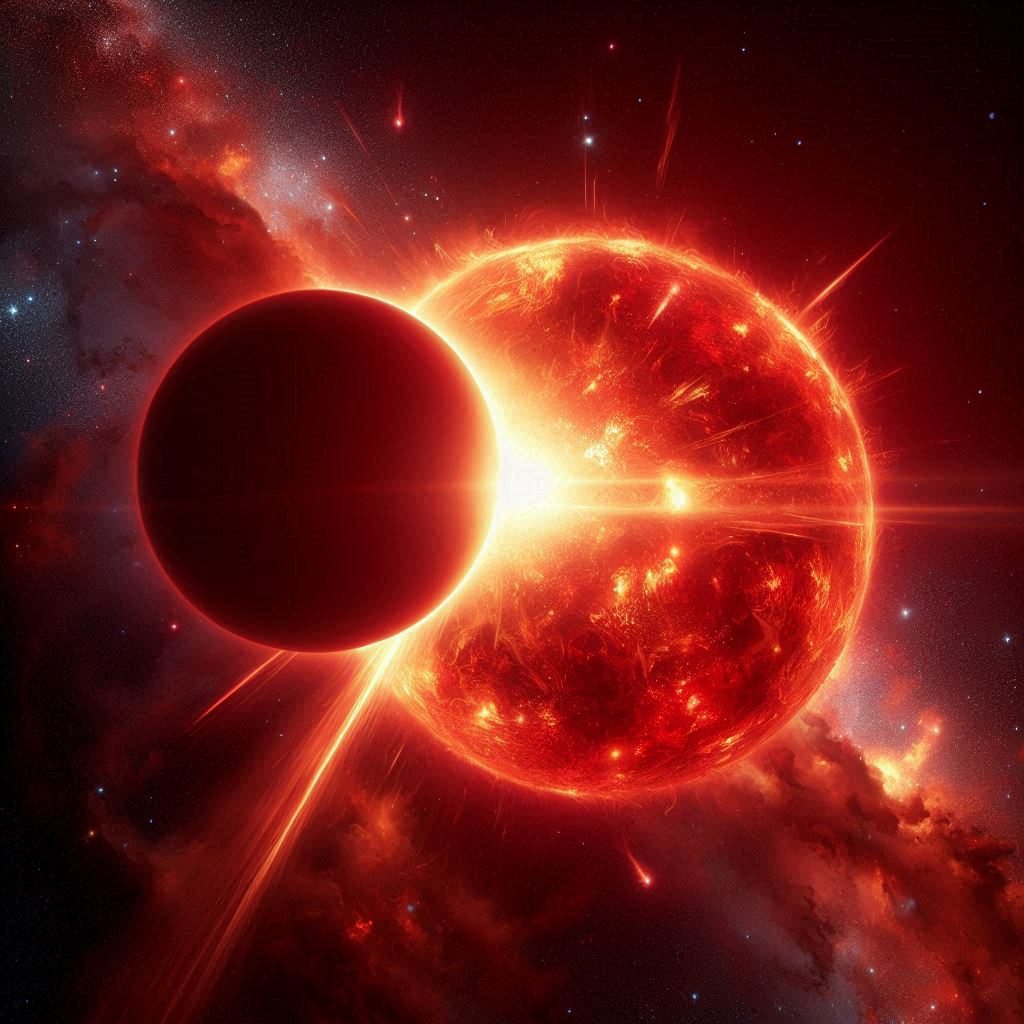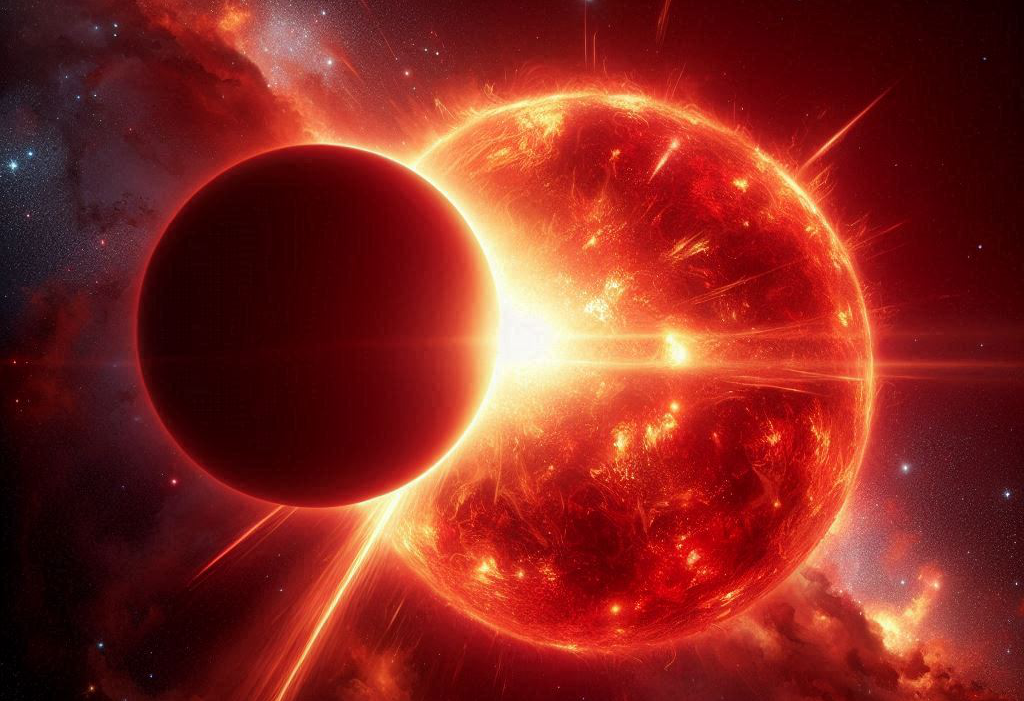(NLDO) - Research on the type of object that plays the role of the mother star of the exoplanets closest to Earth has brought about a chilling truth.
Writing in the scientific journal Monthly Notices of the Royal Astronomical Society, a group of authors from the Institute of Astronomy at the University of Hawaii (USA) and the Department of Physics at the University of Cambridge (UK) warned that red dwarfs have a habit of attacking their planets with devastating stellar flares.
Red dwarfs are dim, cooler M-class stars than our Sun and make up 70% of the stars in the Milky Way galaxy where Earth resides.


Earth-like planet Proxima 4.2 light years away may have a "mother" that regularly explodes - Illustration AI: ANH THU
There are also several known red dwarfs near our Sun, the most famous example being Proxima Centauri, a red dwarf star that hosts at least one Earth-like planet.
Stable, abundant, and highly likely to host rocky planets, red dwarfs have become attractive targets in the hunt for exoplanetary life.
But the new study delivers shocking news as it looks at about 300,000 stars and focuses on 182 flares originating from M-class systems.
According to the authors, while previous large-scale observational studies of stellar flares have been conducted mainly at optical wavelengths, their work focuses on the ultraviolet (UV) radiation emitted from these events.
Specifically, this study examined radiation in the near UV (175–275 nm) and far UV (135–175 nm) ranges.
While this radiation is not necessarily harmful to the development of complex molecules that we believe are a prerequisite for life, this type of radiation can have a significant impact on a planet's habitability.
The dose makes the poison: In relatively modest amounts, the high-energy photons produced by stellar flares can help catalyze the formation of life-related compounds, but too many strip a planet's atmosphere, including its ozone layer.
This further exposes potential life to UV rays and puts it at risk.
Even if life had evolved to some extent, a UV burst too powerful would be enough to cause a catastrophic extinction.
Ninety-eight percent of the 182 flares recorded by the team from red dwarfs released higher-than-expected levels of UV, enough to cause a catastrophe.
"If red dwarf flares do indeed produce excessive amounts of UV radiation, planets orbiting them could be more hostile to life than we thought, even if they meet other criteria for habitability," the authors conclude, according to Science Alert.
Still, most astrobiologists believe that life still finds a way to squeeze through narrow doorways.
Maybe those planets don't have aliens, but they still might have extreme creatures like we've found underground, under deep ice, in toxic lakes or boiling geothermal waters...
Source: https://nld.com.vn/hanh-tinh-co-su-song-gan-chung-ta-dang-doi-mat-viec-tan-the-196241015091710076.htm



































































































Comment (0)